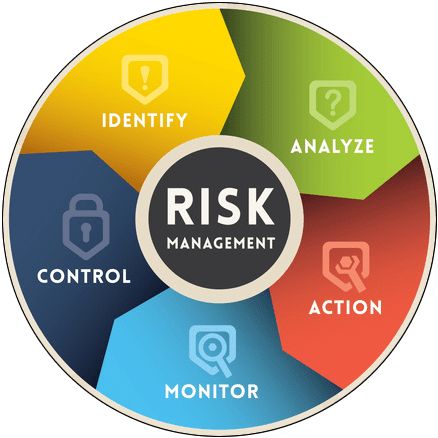Risk management is a process that involves the identification, assessment, and management of potential risks that could have an adverse effect on an organization. It is a critical part of any successful business strategy, as it helps to ensure that potential risks are identified and managed in a timely manner. In this article, we will discuss the six steps of risk management and how they can help organizations to better manage their risks.
Identify Risks
The first step in risk management is to identify potential risks that could affect the organization. This can be done through a variety of methods, such as brainstorming, interviews with stakeholders, and reviews of existing processes. By identifying potential risks, organizations can begin to assess their likelihood of occurrence and the impact they could have on the organization.
Assess Risks
Once potential risks have been identified, the next step is to assess the likelihood of their occurrence and the impact they could have on the organization. This assessment should include an analysis of the potential risks, as well as the potential costs associated with them. This step is critical to the risk management process, as it helps organizations to prioritize risks and develop strategies for managing them.
Develop Risk Response Strategies
Once potential risks have been identified and assessed, the next step is to develop strategies for managing them. This can include a variety of strategies, such as avoidance, transfer, reduction, or acceptance. Each strategy should be evaluated to determine which one is most appropriate for the risk in question.
Monitor and Review
Once risk management strategies have been developed, the next step is to monitor and review the effectiveness of the strategies. This can be done through regular reviews of the risk management process, as well as through the use of performance indicators. By monitoring and reviewing the effectiveness of the strategies, organizations can ensure that they are taking the necessary steps to effectively manage their risks.
Report and Communicate
The fifth step in risk management is to report and communicate the results of the risk management process to stakeholders. This can include both internal and external stakeholders, such as customers, suppliers, and investors. By reporting and communicating the results of the risk management process, organizations can ensure that their stakeholders are aware of the potential risks and the strategies that have been put in place to manage them.
Implement Risk Management
The final step in risk management is to implement the strategies that have been developed. This can include the development of policies and procedures, as well as the training of staff on the proper procedures for managing risks. By implementing risk management strategies, organizations can ensure that they are taking the necessary steps to effectively manage their risks.
Conclusion
Risk management is an essential part of any successful business strategy. By following the six steps outlined in this article, organizations can ensure that they are taking the necessary steps to identify, assess, and manage their risks in a timely and effective manner. By doing so, they can ensure that they are better prepared to handle any potential risks that may arise.


